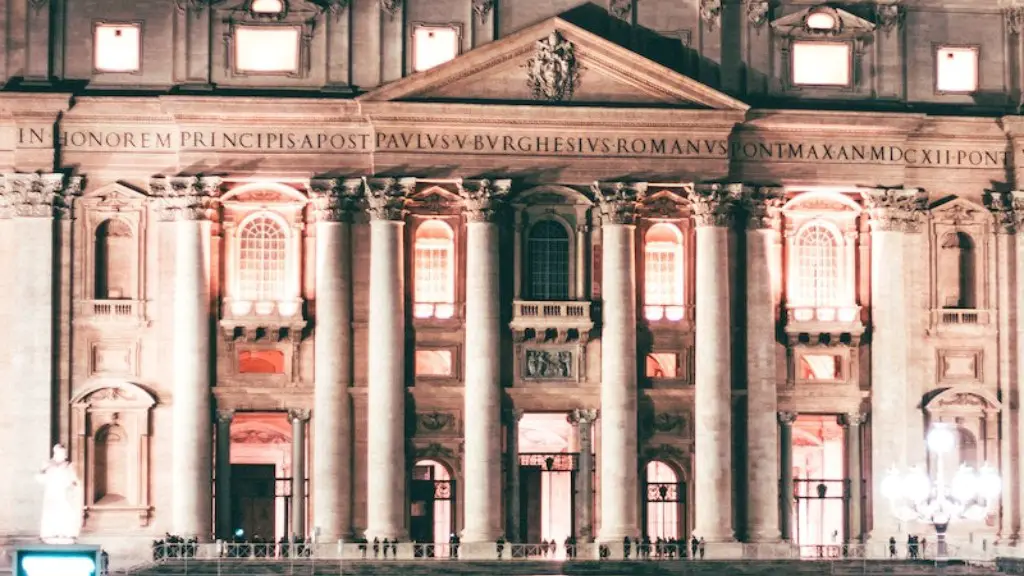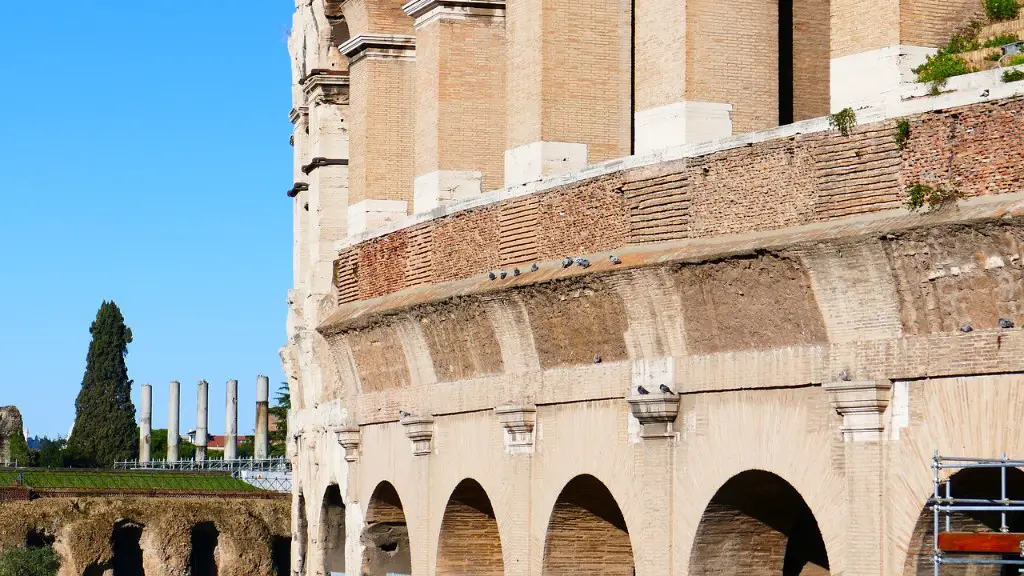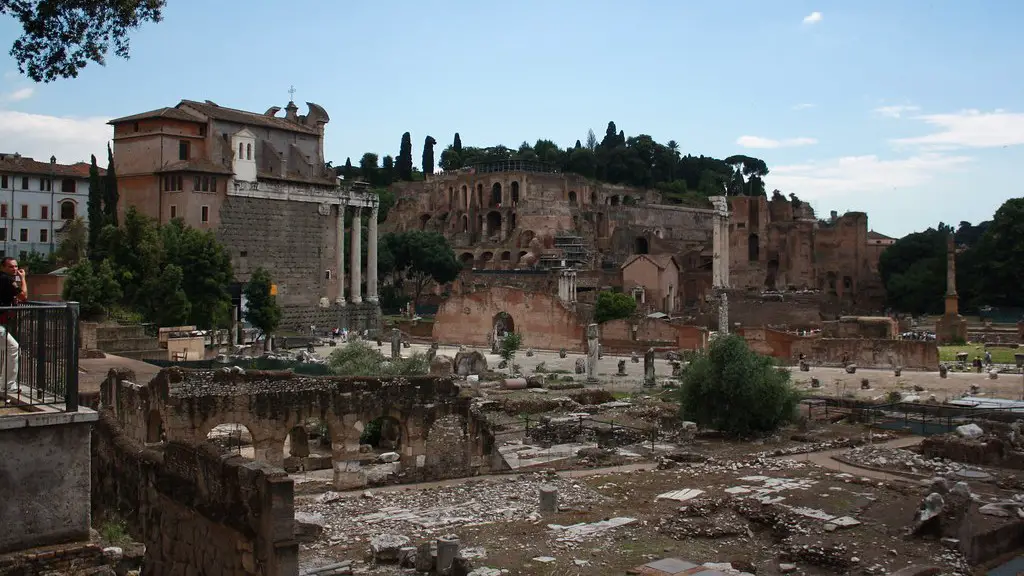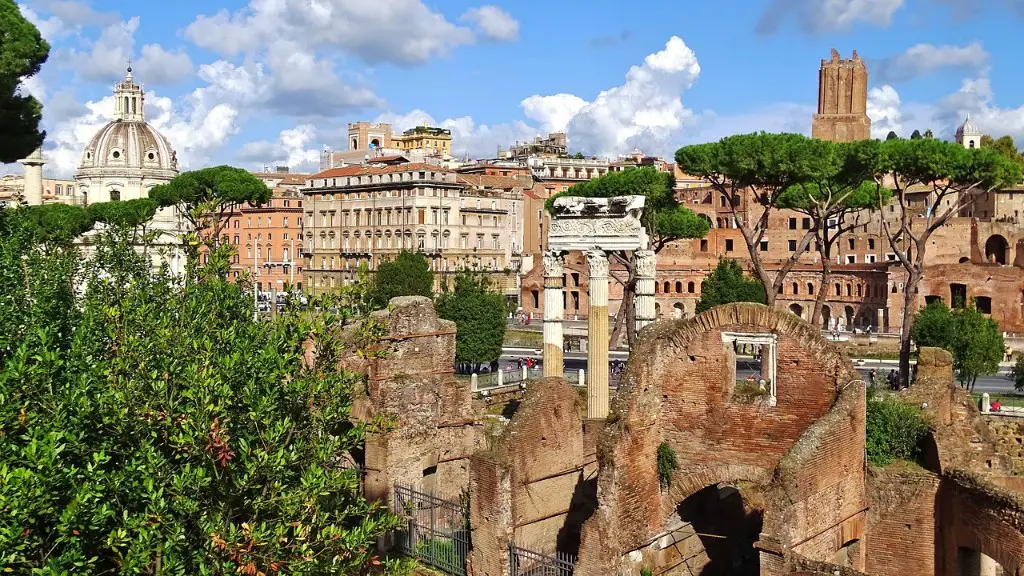History of Ancient Roman Architecture
The Ancient Roman civilization has left behind some of the most impressive architectural feats the world has ever seen. From the Pantheon in Rome to the Coliseum, Ancient Roman buildings were notable for their grandiose designs, impressive scale and technical innovations. Ancient Roman architecture featured amazing arches, domes and columns, which had never been seen before.
The earliest buildings in Ancient Roman architecture were divided into three main categories: religious, domestic and public. Religious buildings, such as temples, were usually built using marble, granite, or limestone and usually featured the distinctive arch design.
For domestic dwellings, the most common building material was brick, often laid in intricate patterns and decorated with colorful stucco. Columns were also used to separate rooms, and also to support balconies and porticos that opened up to the exterior.
Public buildings were even more spectacular, often featuring large courtyards, or grand staircases. Ancient Roman buildings usually had a hierarchical design, with the most important buildings, such as the Senate House, located at the center of the complex surrounded by smaller public buildings such as libraries, baths and markets.
The most famous examples of Ancient Roman architecture are the Coliseum, the Pantheon and the Trajan’s Column. The Coliseum was an impressive stadium used for a variety of sports as well as plays and public spectacles. The Pantheon was a temple dedicated to all the gods, and was noted for its splendid dome.
The Trajan’s Column was a monument to the Emperor Trajan’s victories in battle, and featured a series of carved reliefs depicting those victories. This impressive monument was supported by a series of columns, and was topped by a statue of the emperor himself.
The arch was one of the most important innovations in Ancient Roman architecture, and it allowed for both strength and flexibility in Roman buildings. It also enabled them to build large structures such as bridges and aqueducts without the need for heavy supports.
Historical Significance of Ancient Roman Buildings
Ancient Roman architecture is not just aesthetically impressive, but stands as an important historical testament to the ingenuity and ambition of the Roman civilization. Ancient Roman buildings were influential and inspirational, and many of their designs can still be seen in modern-day architecture.
In fact, many of the iconic monuments of Rome, such as the Coliseum, the Pantheon and the Trajan’s Column, are still standing, a testament to their durability and technical brilliance. They have become popular tourist attractions and a source of pride to the Italians.
Other innovations of Ancient Roman architecture that are still in use today include concrete, arches, vaults and domes, all of which few other cultures would rival until much later. The Romans also introduced the style of building large public forums, which were used for civic and commercial activities, and for religious ceremonies.
The influence of Ancient Roman architecture can be seen in many places around the world, from modern-day office buildings to churches, and even in some contemporary homes. Architects have long been inspired by the creativity and ingenuity of the ancient Romans and have used their designs as the basis for some of the most spectacular buildings today.
What Ancient Roman Buildings were Used For
Ancient Roman buildings had a variety of purposes, including religious worship, domestic dwellings, public buildings and memorials. The most famous buildings were temples, which were built to honor the gods and to offer prayers. The Coliseum and Pantheon were two of the most important temples, with the Pantheon featuring a magnificent dome.
The majority of domestic dwellings were constructed using brick, and featured intricate patterns and decorations. They usually featured columns to separate the rooms and balconies and porticos opened up the façade to the exterior. Public buildings were often constructed more elaborately, with large courtyards, staircases and marble pillars.
These public buildings could be used for a variety of purposes, ranging from commercial activities to civic functions and even public spectacles. Memorials were also popular in Ancient Rome, with Trajan’s Column standing as one of the most impressive and best-preserved.
Innovations in Ancient Roman Architecture
Ancient Roman architecture was characterised by innovation and technical flair. The arch was a huge advancement, and allowed for strength and flexibility in Roman buildings and enabled them to build impressive bridges and aqueducts without the need for bulky supports.
Concrete was also developed during this time, and allowed for the construction of historically significant monuments and buildings. The Romans also developed a signature style of columns, arches and vaults, which could be found in many of the public buildings in the centre of Rome.
The complex and stately style of Ancient Roman architecture was also a result of the Roman appreciation for symmetry and order. The designs of Ancient Rome are characterized by ornamental details, mathematical order and a sense of grandeur, which were further enhanced by the use of statues, pillars, fountains and mosaics.
This intricate style is still influential today, and has made its mark on countless buildings around the world. It has also been an inspiration for many modern-day designers and architects, who use the classical motifs of Ancient Rome to add a sense of timeless beauty to their own designs.
Legacy of Ancient Roman Architecture
Ancient Roman architecture is remembered for its grandeur and technical innovation. Its influence can be seen around the world, from the churches to the office buildings of Europe and North America. Many of the iconic monuments of Rome are still standing, a testament to their durability and design genius.
Modern architects have also been inspired by Ancient Roman architecture, using its intricate details and classical motifs to add a sense of timeless elegance to their own designs. And even though it was created thousands of years ago, the scope and ambition of Ancient Roman architecture still stands as an impressive reminder of the impressive achievements of the Roman civilization.
Conclusion
Ancient Roman architecture was a testament to the technical brilliance and ambition of the Roman civilization. Its innovations, such as the arch and concrete, as well as its ornamental designs, still influence architects and designers today. The iconic monuments of Rome also stand as reminders of the enduring legacy of Ancient Roman architecture, stimulating wonder and admiration in all who behold them.





